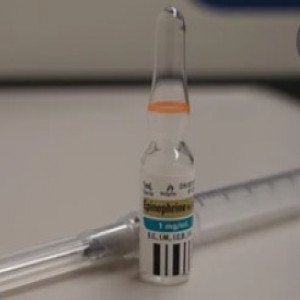 Welcome
Welcome
“May all be happy, may all be healed, may all be at peace and may no one ever suffer."
Novo Nordisk

Mixtard 30 30% + 70% in 100IU / ml

Generic for Diseases
- Diabetes
Insulin Human (rDNA) is human insulin made by recombinant DNA technology. It has the same structure and function as natural insulin. Insulin regulates the glucose metabolism and stimulates the ingestion and utilization of glucose by liver, muscle and fat tissue. It also lowers blood glucose by accelerating glycogenesis and inhibiting gluconeogenesis.
Insulin Human (rDNA) 30/70 & Insulin Human (rDNA) 50/50 start action within 30 minutes after injection, reach peak level within 2-8 hours and last about 24 hours.
Insulin Human (rDNA) & Isophane Insulin Human 30/70 Injection 40 IU/ml: Each ml suspension contains Insulin Human (rDNA) USP 40 IU (equivalent to 1.388 mg) as 30% Soluble Insulin Human (Regular) and 70% Isophane Insulin Human.
Insulin Human (rDNA) & Isophane Insulin Human 30/70 Injection 100 IU/ml: Each ml suspension contains Insulin Human (rDNA) USP 100 IU (equivalent to 3.47 mg) as 30% Soluble Insulin Human (Regular) and 70% Isophane Insulin Human.
Insulin Human (rDNA) & Isophane Insulin Human 50/50 Injection 100 IU/ml: Each ml suspension contains Insulin Human (rDNA) USP 100 IU (equivalent to 3.47 mg) as 50% Soluble Insulin Human (Regular) and 50% Isophane Insulin Human.
Treatment of all patients with type 1 diabetes. Treatment of patients with type 2 diabetes who are not adequately controlled by diet and/ or oral hypoglycemic agents.
For the initial stabilization of diabetes in patients with diabetic ketoacidosis, hyperosmolar non-ketotic syndrome and during periods of stress such as severe infections and major surgery in diabetic patients. Treatment of gestational diabetes.
The average range of total daily insulin requirement for maintenance therapy in type 1 diabetic patients lies between 0.5 and 1.0 IU/kg. In pre-pubertal children it usually varies from 0.7 to 1.0 IU/kg, whereas in insulin resistant cases, e.g. during puberty or due to obesity, the daily insulin requirement may be substantially higher. Initial dosages for type 2 diabetic patients are often lower, e.g. 0.3 to 0.6 IU/kg/day.
The dosage form, the dosage and the administration time of the insulin are different due to the individual differences of each patient. In addition, the dosage is also affected by food, working style and exercising intensity. Therefore, patients should use the insulin under doctor's instruction.
Administration
An injection should be followed by a meal or snack containing carbohydrates within 30 minutes. Injection is administered subcutaneously in the upper arm, thigh, buttock or abdominal wall. A subcutaneous injection into the abdominal wall results in a faster absorption than from other injection sites. Insulin Human (rDNA) 30/70 & Insulin Human (rDNA) 50/50 are never to be administered intravenously.
Preparation before use:
- Clean your hands.
- Shake or rotate the vial gently to mix the solution uniformly and check if the insulin has the normal appearance.
- In case of using a new vial, flip off the plastic protective cap and wipe the rubber plug with an alcohol swab.
- Draw air into your syringe equal to the amount of insulin needed.
- Puncture the needle into the vial and inject the air.
- Turn the bottle and syringe upside down and withdraw correct dose of insulin into the syringe.
- Before pulling out the needle, check if there are any bubbles remain in the syringe. If so, put the syringe upright and tap the syringe to discharge the air bubbles.
Injection site:
- Choose the area where skin is less tight, such as the upper arm, thigh, buttock or abdomen.
- To avoid tissue damage, choose a site for each injection that is at least 1 cm from the previous injection site.
Injection method:
- Cleanse the skin with alcohol where the injection is to be made.
- Put the needle in such a position as to form 45° angle with the skin.
- Puncture the needle into skin and inject insulin.
- Keep the needle under the skin for at least 6 seconds to make sure the entire dose is injected.
- Pull the needle out and apply gentle pressure over the injected site for several seconds.
Hypoglycemia or the patients who have allergic reaction to insulin or any of the excipients.
Hypoglycemia is the most common adverse effect during insulin treatment and symptoms of hypoglycemia may occur suddenly. Few cases of the allergic reaction such as red and swollen or itching are reported. It usually disappears in a few days. In some instances, the allergy may be caused by other reasons rather than insulin, such as disinfectant and poor injection technique.
Overdose Effects
Excessive use of insulin may lead to hypoglycemia during the treatment. Slight to moderate hypoglycemia may suddenly occur. It is important to get immediate treatment when hypoglycemia occurs. If you have frequent hypoglycemia, you should consult your doctor to discuss possible changes in therapy, diet plans, and/or exercise programs to help you avoid hypoglycemia.
Inadequate dosing or discontinuation especially in type 1 diabetes, may lead to hyperglycemia. Hypoglycemia may occur if the insulin dose is too high in relation to the insulin requirement. Omission of a meal or unplanned, strenuous physical exercise may lead to hypoglycemia.
Pregnancy & Lactation
There are no restrictions on treatment of diabetes with insulin during pregnancy, as insulin does not pass the placental barrier. Insulin treatment of the nursing mother presents no risk to the baby.
Mixtard 30 30% + 70% in 100IU / ml and more Available Brands
Mixtard 30 30% + 70%...
NovoMix 30% + 70%
Mixtard 30 30% + 70%...
Actrapid 100IU / ml
Actrapid FlexPen 100IU / ml
Insulatard Flexpen 100IU / ml
Insulatard Penfill 100IU / ml
Levemir Flexpen 100IU / ml
...
To be happy, beautiful, healthy, wealthy, hale and long-lived stay with DM3S.